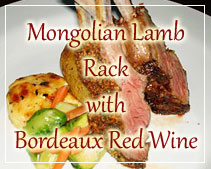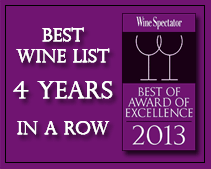A closer look at Spring Mountain AVA
Standing on a windswept Spring Mountain ridge top among redwoods and madrone trees, one can almost make out the traffic jam in downtown St. Helena 2,000 feet below. As the crow flies, it’s about five miles from this rocky ridge to the daily lineup at Model Bakery on Main Street. In between are patches of contoured vineyards bordered by lush forest, steep canyons and shaded creeks.
Like many regions bordering the valley floor, Spring Mountain highlights the climactic and topographic diversity of Napa County and its world-renowned wine industry.
Named for the natural springs that surface throughout the region, Spring Mountain is a group of mountains rather than a single peak, according to a history written in 1991 by William Heintz.
“Spring Mountain is a broad, general geographic area lying west of the town of St. Helena and apparently well known for more than a century for its numerous springs,” Heintz writes. “Why this region of Napa Valley and county should, however, come to be so clearly labeled as ‘Spring Mountain’ is somewhat bewildering.”
Bewildering, too, is why anyone would take up the challenge of carving vineyards out of this formidable, forested landscape.
Wine grape growing officially began in the area in 1874 when Charles Lemme planted the 25-acre La Perla Vineyard near York Creek, according to Heintz. Other Spring Mountain vineyards followed, including those planted by the Beringer brothers and Fortune Chevalier, who also built a small winery. San Francisco banker Tiburcio Parrot planted the Miravalle estate and built a spectacular Victorian home, still magnificent today. The La Perla, Chevalier and Miravalle vineyards are now part of Spring Mountain Vineyard.
Other early vineyards and wineries continued to pop up in the Spring Mountain area ranging from St. Helena up to the ridge-top Napa/Sonoma county line. Modern-day vintners and residents have found old grape stakes and winery ruins scattered throughout the region.
In 1920, Prohibition effectively wiped out Spring Mountain grape growing and wine making until the 1940s, when a new generation of vintners and soon-to-be vintners slowly began returning to the area. The area continued to develop along with the entire Napa Valley wine industry and, in 1993, earned its official designation as an American Viticultural Area. Today, the Spring Mountain District AVA covers 8,600 acres — including about 1,000 acres of vineyards — and has about 30 members.
Is Paso Best for Cabernet?
Paso Robles, Calif.— “Paso Robles is the ultimate terroir for Cabernet Sauvignon and other Bordeaux varieties,” according to Daniel Daou, who owns Daou Vineyards with his brother Georges. In 2012, Daou helped to found The Paso Robles CAB (Cabernet and Bordeaux) Collective, which will host its first event April 26-27. CABs of Distinction aims to attract trade, media and consumers and validate Daou’s claim with tastings and discussions. The vast Paso Robles AVA, largest in the U.S., encompasses some 614,000 acres of San Luis Obispo County. More expansive than Sonoma and Napa counties combined, it provides superior growing conditions for most winegrape varieties, according to Daou. WinesVinesDATA reports that of 333 wineries in SLO County, 187 are producing Cabernet Sauvignon, 204 produce Syrah, 89 bottle Merlot varietals and 81 make Pinot Noir wines. Daou, (who hails not from Bordeaux, but Paris), justified his boast: “Bordeaux gets one great vintage out of five or seven years, when the grapes and tannins actually ripen. Here, we can achieve ripeness every year. Here, we might get it wrong (once) every seven or 10 years,” he said. He explained that the climate of Bordeaux, and the thicker skins of its grapes, often result in harsh tannins and green flavors. For true enjoyment, these wines need to bottle age, not a popular concept among most 21st-century American consumers. Paso Robles’ climate, soils and relatively recent plantings of thinner skinned, easier ripening clones, produce Cabernet wines with higher pH and softer tannins that are immediately approachable but remain age-worthy, Daou said. Most Paso vineyard soils are calcareous clay, he said, which allows for a traditional, minimalist style of vinification without addition of tartaric acid. Barred in Bordeaux, acidulation is common in U.S. wineries because of warm temperatures at harvest. “My Cab hangs until it’s ripe and is never acidulated,” Daou said. “It won’t bite the back of your jaw, but it’s still very high in tannins and phenolics,” as attested each year by rigorous lab testing. On his estate in the Santa Lucia Mountains, Daou grows red Bordeaux varieties, a little Zinfandel and a little Syrah for blending. At the moment, 66 acres are planted, a figure that will grow to 92 with new plantings going in next month. Founded in 2007, Daou Vineyards recently increased production to 12,000-15,000 cases of three tiers, all sourced exclusively in the Paso Robles AVA. They’re distributed in almost every state, sell well in Germany and are just entering the Asian market. Why Paso, why now? In addition to the soils, “We can achieve true ripeness: That’s super key,” Daou insisted. He cited drastic diurnal temperature changes during the growing season: “The Pacific is very cold, but even if it reaches 100°F inland, the maritime layer creeps through the Templeton Gap. You may very easily see a 50°F shift that cools the grapes at night.” At a 2,200-foot elevation, Daou’s vineyards are above the fog line. “We get 14 hours of beautiful, ripening sun,” he reported. The Central Coast’s winegrowing history helps to explain why this is the time to promote its Cabernets. When Paso Robles vineyards began planting 30-40 years ago, “All these high-end wineries up north were looking for a place for ‘production’ Cabs,” Daou said. “Not all clones are equal.” The Clone 8 vines planted then yield 5 to 7 tons per acre, with redder fruit and red fruit flavors. Wines from these productive wines continue to carry the weight for lower-priced bottlings, but pioneers like J. Lohr, Justin and Eberle “elevated the bar” for higher end Paso Cabernet by planting thin-skinned clones with smaller clusters and lower yields, he said. Group effort The PRCC, Daou said, is “about creating awareness that we have great terroir and can rival any Cabernet in the world.” More than promotion, though, it’s about collaboration. “We get together and cooperate to share information. We are a team working together. There’s a true family spirit in Paso,” he said. “I recently met with a dozen winemakers at my winery for a meal. The conversations were dramatic, funny and lively. We all so much believe that this terroir has not been given its true fair share.” The proposed subdivision of the Paso Robles AVA, which stalled in 2007, when the TTB paused to review its approval process, is back on track, Daou said. He expects that rulemaking will come to fruition in a year or two, creating 11 sub-appellations. CABs of Distinction will feature a barrel tasting of the 2012 vintage and a panel discussion and tasting for trade and media, plus winemaker dinners at Paso Robles restaurants and a grand tasting for consumers. For details, visit pasoroblescab.com. The informal, grassroots organization currently includes Adelaida Cellars, B&E Vineyard, Chateau Margene, Daou Vineyards & Winery, Eberle Winery, HammerSky Vineyards, J. Lohr Vineyards & Wines, Jada Vineyard, Justin Vineyards & Winery, L’Aventure, Parrish Family Vineyards, Record Family Wines, Robert Hall Winery, Sextant Wines, Venteux Vineyards and Vina Robles.









